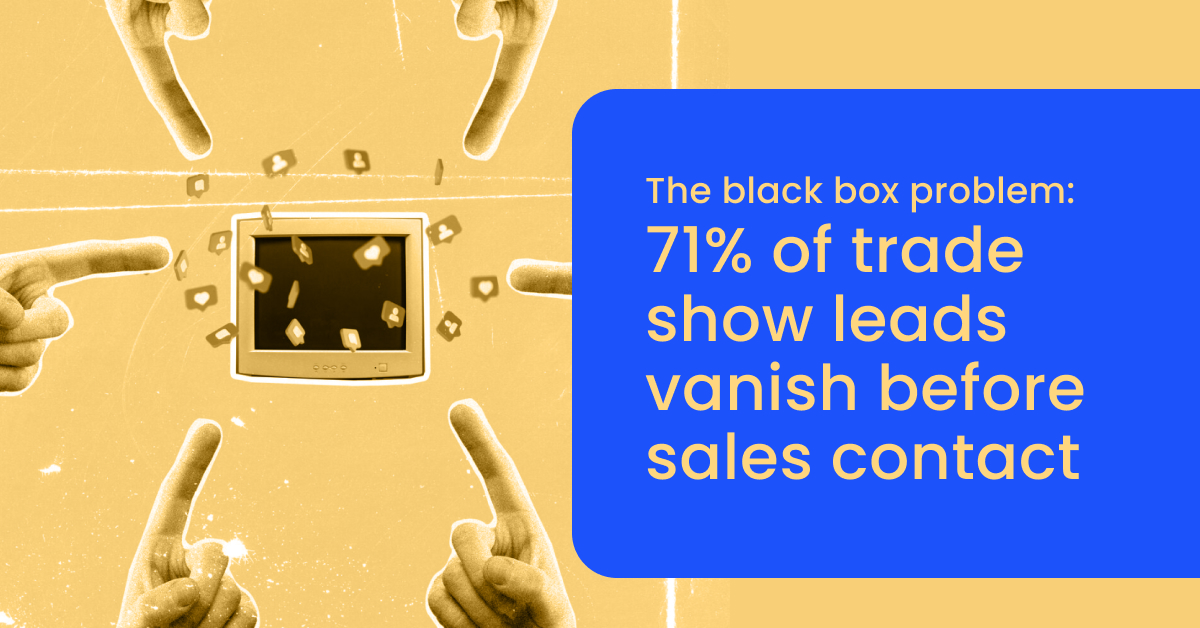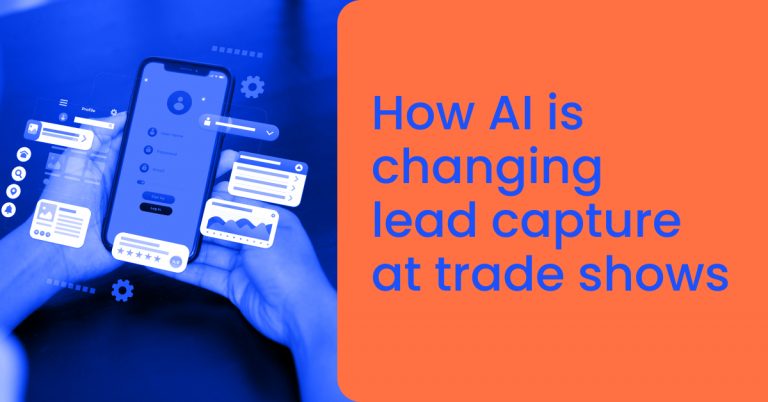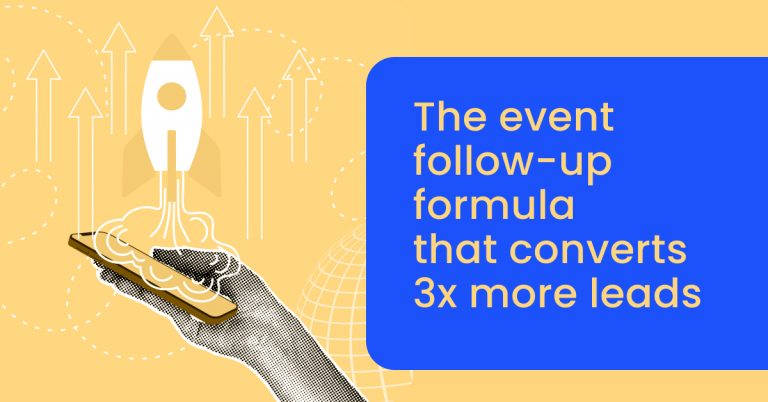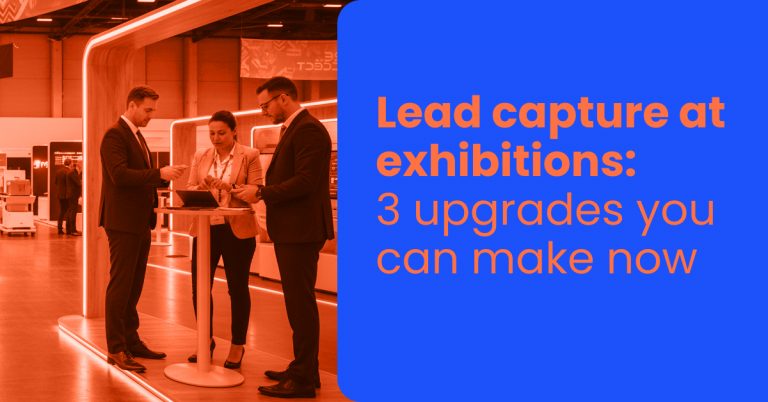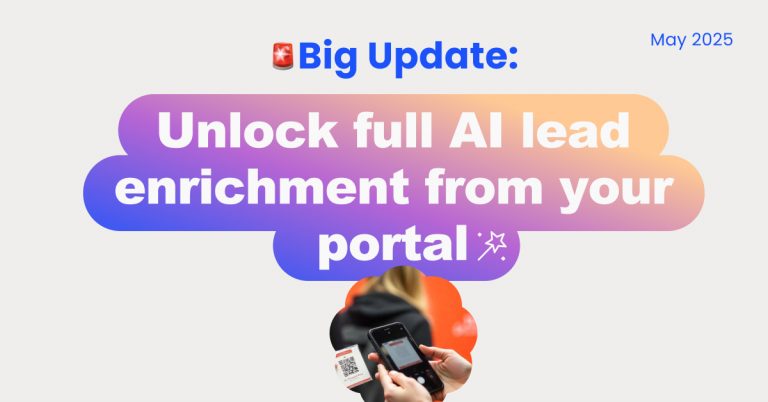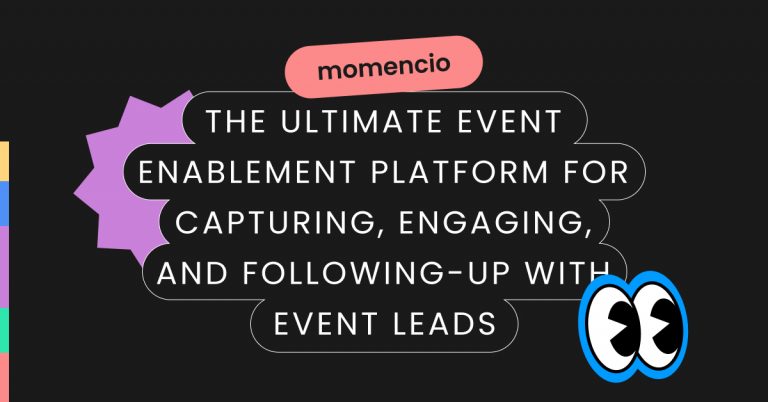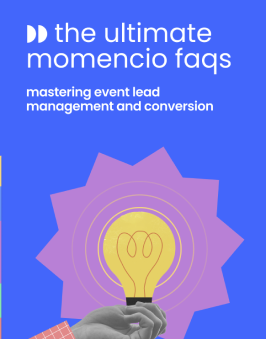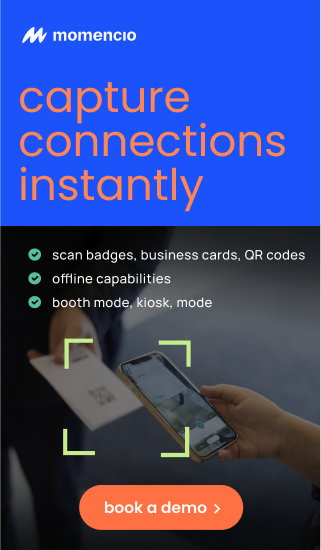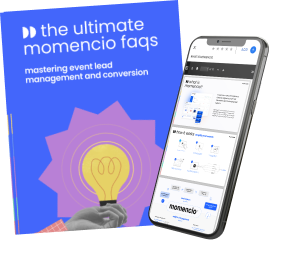You’ve invested tens of thousands into your booth. The lights are on, the coffee’s flowing, and badge scans are pouring in. On the surface, everything feels like a win. But fast forward two weeks after the event—what’s actually happened to all those leads?
Here’s the uncomfortable truth: up to 71% of trade show leads vanish before reaching the sales contact stage.
They don’t convert. They don’t get called. Some don’t even make it into the CRM. It’s as if the leads enter a black hole—one where marketing thinks they’ve done their job and sales is left wondering where the pipeline is.
This is what we call the Black Box Problem.
It’s not just a workflow issue. It’s a revenue issue. The disconnect between what happens on the event floor and what happens post-event is one of the most expensive gaps in modern B2B marketing. What’s worse is that most teams don’t realize they’re bleeding opportunity until the quarter ends and the numbers don’t add up.
The problem isn’t that events aren’t working. It’s that the most critical window—the moments right after an interaction—is being overlooked or mishandled. Leads go cold. Intent fades. And that badge scan becomes just another forgotten contact in a spreadsheet.
At momencio, we’ve seen this pattern play out across thousands of event engagements. The black box problem shows up in subtle but deadly ways: leads not enriched with context, conversations not logged, follow-ups delayed by days or weeks. It’s not for lack of effort. It’s for lack of visibility and alignment.
This article unpacks the root causes behind why trade show leads often disappear before they ever reach sales. We’ll explore the operational, behavioral, and technological breakdowns that make follow-through so challenging—and more importantly, what can be done to fix it.
Because the truth is, you don’t need more leads from your next event.
You need more of them to actually convert.
The anatomy of the black box
Let’s follow the timeline of a single event lead to get on the same page first—we will call her Sara.
Sara walks into your booth at 2:17 PM on day two of the trade show. She’s a VP at a fast-scaling company and just asked a killer question about your integration capabilities. Your booth rep answers it well, hands her a slick brochure, and scans her badge.
She smiles, nods, walks away.
You think: “Great conversation. Hot lead.”
But now the clock starts ticking.
2:18 PM
Her scan gets captured by your badge reader or lead app. Except… no context is saved. Not the question she asked. Not the product she was interested in. Not even a note that she’s a decision-maker.
End of day
Your team exports the lead list. Maybe someone writes down a few notes. Maybe. But it’s late, and everyone’s tired.
Two days later
Marketing uploads the spreadsheet to the CRM. Or tries to. Fields don’t match. Some rows are incomplete. There’s confusion: Should Sara be marked as MQL or just a prospect?
One week later
Sales gets the lead list—finally. But now Sara’s name is buried under 300 others, and no one remembers the actual conversation. To a rep, she looks like a random VP who got a flyer.
Two weeks later
Sara gets a templated email: “Hi [First Name], Thanks for visiting our booth!”
She doesn’t remember your brand. She marks it as spam. That’s it. Game over.
The black box isn’t just a metaphor. It’s the invisible space where intent dies and leads go cold.
This is the hidden cost of bad systems and handoffs. It’s not that reps don’t want to follow up. It’s that by the time they do, there’s nothing real left to follow.
What should’ve been a high-intent, high-opportunity lead ends up in CRM purgatory.
Now multiply Sara by 71% of your booth scans. That’s not just a missed opportunity. That’s your event ROI being siphoned off—quietly and consistently.
This section isn’t about blame. It’s about visibility. Because once you understand what happens inside the black box, you can start designing your way out of it.
Challenges faced by sales reps
Sales reps are often positioned as the finish line of event efforts—but rarely are they set up to win. Here’s where the real friction begins once the booth lights go off.
Delayed Access to Leads
Timing is everything. But in most event workflows, sales doesn’t receive lead data until days—sometimes weeks—after the event ends. By then, the emotional momentum from a great conversation is gone. Prospects have moved on, inboxes are full, and what felt warm now feels cold. The delay turns high-intent leads into stale names on a spreadsheet.
Lack of lead context
A badge scan alone isn’t a lead—it’s just a starting point. Yet most lead handoffs include little to no insight into what was discussed, what products the visitor was interested in, or what problem they’re trying to solve. Reps are left guessing, forced to send generic outreach like “Great to see you at the event!”—even when they never met the person. That first impression lands flat.
No clear prioritization
Not every badge scan deserves follow-up. But when every contact is treated the same, reps lose visibility into who’s actually worth pursuing. There’s no differentiation between a junior analyst who stopped by for swag and a VP who asked a pointed question about integration capabilities. Without intent signals or qualification markers, reps waste time and miss opportunities.
Volume overload, value underload
Reps are routinely handed hundreds of names without guidance on how to act. High volumes with low clarity create overwhelm—and apathy. When follow-up becomes a guessing game, many reps move on to warmer, more visible opportunities already in their pipeline
Read: Little-known ways to build a lead pipeline for your next trade show
Fractured accountability
When conversions stall, the blame game begins. Marketing blames sales for not following up fast enough. Sales blames marketing for poor lead quality. Meanwhile, actual business value is lost in the crossfire. Without shared visibility or alignment, no one really owns the outcome—and everyone suffers.
The takeaway: Sales reps aren’t dropping the ball. They’re being handed a deflated one.
Until lead handoffs are timely, enriched with context, and aligned with actual buyer behavior, the black box will continue to drain the value from your best event interactions—silently, but persistently.
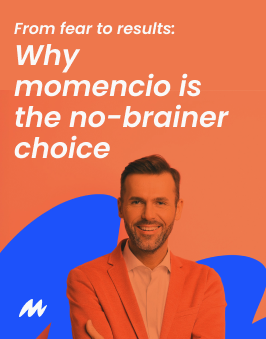
Challenges faced by event professionals
If sales feels the pain of poor lead follow-up, event professionals feel the pressure of proving event ROI—often with one hand tied behind their back. Behind every badge scan and branded activation is a team navigating real operational and strategic constraints.
Unreliable lead capture methods
Many teams still rely on outdated or fragmented lead capture tools. From scanning badges with third-party hardware to jotting notes on paper, these systems leave too much room for error. Leads get duplicated, notes get lost, and entire conversations vanish. What should be rich, usable data ends up as a raw export file with no context, no structure, and no strategy.
Integration gaps with marketing and sales systems
Even when data is captured correctly, it often gets stuck in disconnected silos. If your event platform doesn’t integrate seamlessly with your CRM or marketing automation stack, you lose speed, personalization, and the ability to act. The result? Event leads sit idle while operations teams scramble to manually clean and upload lists days after the fact.
No real-time feedback loop
During the event, most marketing and event pros are flying blind. There’s no visibility into which conversations are turning into actual opportunities—or which reps are even logging interactions. That lack of feedback means missed chances to double down on what’s working, fix what’s broken, or loop in decision-makers while they’re still at the venue.
Unclear follow-up plans
Even with the best intentions, many event teams fail to define what happens after the event. Who follows up? When? With what messaging? Without a predefined nurture track or rep ownership plan, leads fall through the cracks. There’s a burst of activity during the show, followed by silence afterward.
The burden of justifying ROI
Perhaps the most difficult challenge: proving the event was worth it. When leads vanish into the black box, it’s nearly impossible to tie event spend to pipeline or revenue. That makes it harder to justify budget, scale future programs, or get buy-in for better tools. And yet, the burden of proving success often lands squarely on the shoulders of the event team.
Event professionals aren’t just coordinating logistics. They’re shaping first impressions, influencing pipeline, and bridging the gap between brand and buyer. But without the right infrastructure, their efforts stay invisible—and unrecognized.
The consequences of inaction
Failing to address the black box in trade show lead management doesn’t just create minor inefficiencies—it quietly undermines the effectiveness of your entire event strategy. Without structural changes, the cost of inaction compounds over time, creating gaps that are difficult to recover from.
Lost conversion opportunities
The most immediate consequence is lost business. Leads collected at events carry a short shelf life. When follow-up is delayed or generic, the window of opportunity closes quickly. Prospects either forget the interaction, lose interest, or engage with another solution provider. What could have been a high-value conversion becomes a missed opportunity—often without anyone realizing it.
Degraded sales pipeline quality
A poorly managed handoff between event teams and sales introduces noise into the pipeline. Sales teams receive unqualified or irrelevant leads, wasting time on follow-ups that never had a chance to convert. Without lead scoring, prioritization, or behavioral insights, even strong prospects get treated like low-interest contacts. Over time, this not only bloats the pipeline—it skews forecasting and undermines confidence in event-driven opportunities.
Unprovable ROI
When leads aren’t properly tracked, measured, or followed, event ROI becomes difficult—if not impossible—to quantify. Executives ask, “What did we get from the event?” and the answers are anecdotal. Without visibility into how leads progress through the funnel, event marketers can’t credibly link booth activity to revenue outcomes. This puts future event budgets and headcount under scrutiny.
Erosion of internal trust
Poor handoffs damage the relationship between sales and marketing. Sales questions the quality of leads. Marketing feels their efforts are being wasted. This misalignment leads to reduced collaboration and a lack of shared accountability, especially when results fall short. Over time, teams become siloed, and the event program suffers as a result.
Long-term brand risk
Every touchpoint is a reflection of your brand. When someone engages meaningfully at your booth and receives no follow-up—or worse, receives a generic, irrelevant message—they draw conclusions. It signals disorganization or lack of interest. Even if they were a perfect-fit customer, they’ll likely turn elsewhere, remembering your brand as one that didn’t follow through.
Turn lead data into proprietary event intelligence with momencio
Strategies for improvement
Solving the black box problem requires more than patchwork fixes. It demands operational design that supports real-time action, cross-team alignment, and a clear path from event floor to forecasted revenue.
Below are five strategic levers that must be addressed—not in isolation, but as part of a unified event-to-revenue system.
Operationalize Follow-Up as Part of Pre-Event Planning
Most companies leave follow-up until after the show. By then, it’s already too late.
Mature teams define the entire follow-up journey before the booth opens. This includes:
- Who owns each lead segment post-event
- What messaging gets triggered and when
- How high-intent leads are escalated
- SLAs for SDRs and AEs
Without this scaffolding, follow-up becomes fragmented. Leads are handed off inconsistently, personalization is lost, and time-to-contact balloons.
This isn’t about adding more tasks. It’s about shifting follow-up from an afterthought to a planned asset, just like booth design or collateral.
Capture buyer signals, not just contact information
A badge scan is a signal of presence—not of interest or readiness. Yet most lead lists treat them as equal.
What separates top-performing event teams is the ability to capture the “why” behind the visit: What product were they drawn to? What problem did they mention? Did they request a follow-up?
Platforms like momencio enable reps to log contextual insights during the interaction—not hours later when memory fades. That context is what transforms a cold contact into a warm opportunity.
Without it, sales starts at zero, regardless of how strong the booth interaction was.
Accelerate time to follow-up with workflow-linked tech
The longer it takes to follow up, the more likely the deal is lost.
The goal isn’t to send follow-up emails faster. The goal is to build infrastructure that eliminates manual delay:
- Real-time lead routing to CRM with conversation notes intact
- Priority flagging for hot leads
- Immediate task creation for assigned reps
This requires more than just tech—it demands operational alignment. If your system still requires a marketing manager to clean and upload leads manually, you’re 72 hours behind and out of the running.
Create shared visibility into post-event performance
Sales often blames lead quality. Marketing blames lack of follow-up. The root cause: no shared lens on what’s actually happening post-event.
Organizations must implement joint visibility across sales and marketing. This includes:
- Attribution tracking from event to closed revenue
- Lead scoring based on behavior, not titles
- Pipeline velocity metrics tied back to the event channel
Without shared dashboards, there’s no alignment—only assumptions.
Turn feedback into process evolution, not postmortems
Every event should inform the next. But most teams treat post-event analysis as a checkbox, not a feedback loop.
A real post-event review answers:
- Which lead segments converted, and why?
- What signals correlated with higher close rates?
- Where did handoffs slow down or break?
The output should feed directly into process updates—not just for the next event, but for how field marketing and sales operate year-round.
Fixing the black box isn’t about throwing more tech at the problem. It’s about removing friction between intent and action—so that what happens on the event floor doesn’t get lost in translation when it matters most.
Conclusion
Trade shows aren’t broken.
The conversations are happening. The interest is real. The opportunities are there.
But for many organizations, the problem begins the moment the booth interaction ends. What should be a high-conversion channel becomes a blind spot—where intent, context, and potential quietly vanish.
This is the black box.
It isn’t a tool issue. It’s a system issue. A failure to connect what happens on the floor to what happens in the funnel. Sales is left reacting. Marketing is left explaining. And leadership is left wondering why pipeline isn’t matching event spend.
Fixing this doesn’t require more headcount or more events.
It requires clarity:
- Clarity around what makes a lead truly sales-ready
- Clarity around who owns what, and when
- Clarity in the systems that bridge capture, enrichment, and action
It also requires immediacy.
The difference between a missed lead and a closed deal often comes down to time. The time it takes to follow up. The time it takes to recognize intent. The time it takes to turn a moment into momentum.
This is where momencio makes the difference—not just by capturing lead data, but by transforming every interaction into structured, trackable intent. It removes the guesswork from lead handoffs. It compresses the lag between conversation and sales contact. And it replaces the black box with visibility that sales and marketing can both act on.
If you’re investing in trade shows, but still wondering where the leads are going—this is the first place to look.
Because the real problem isn’t lead generation.
It’s lead loss.
And the cost isn’t just missed revenue. It’s missed relationships, missed signals, and missed chances to grow.
FAQs
- How does momencio help reduce lead follow-up delays after events?
- momencio delivers lead data in real time—captured, enriched, and automatically synced with your CRM or sales workflow. That means reps can start follow-up minutes after an interaction happens, not days after the event ends. No spreadsheets, no bottlenecks, and no waiting for data cleanup.
- Can momencio capture more than just contact information—like conversation details or buying intent?
- Yes. momencio allows booth staff to log notes, tag interest areas, and capture behavioral cues during or immediately after the conversation. This context is tied directly to the lead record, giving sales valuable insights to personalize outreach and prioritize effectively.
- We struggle with aligning sales and marketing post-event. Does momencio support cross-team visibility?
- Absolutely. With centralized dashboards and live reporting, momencio creates a single source of truth for both sales and marketing teams. You can track lead engagement, monitor follow-up activity, and analyze conversion trends—without relying on disconnected tools or manual updates.
- How does momencio help us qualify leads better at the event itself?
- momencio allows your team to tag leads based on qualification criteria like interest level, buying authority, or urgency—on the spot. These tags can trigger specific workflows (like instant alerts for hot leads), helping sales focus only on the prospects that are ready to move forward.
- Can momencio help prove ROI for our event programs?
- Yes. momencio gives you visibility into the full journey—from booth interaction to closed revenue. By tying lead activity to pipeline stages and conversion outcomes, you can demonstrate real ROI for every show—not just in terms of leads captured, but revenue influenced and deals won.
Interesting facts from research
- Research indicates that nearly half of businesses fail to reach out to a lead within 24 hours, significantly diminishing the chances of conversion. Prompt follow-up is crucial to capitalize on the initial interest generated at trade shows.
- Only 21% of enterprises have fully integrated their event platforms into their broader sales and marketing tech stacks. This lack of integration hampers effective lead tracking and follow-up, contributing to the black box problem.
- Despite generating numerous marketing-qualified leads (MQLs), fewer than 1% of individual leads actually result in sales. This statistic highlights the inefficiencies in current lead management and follow-up processes.
